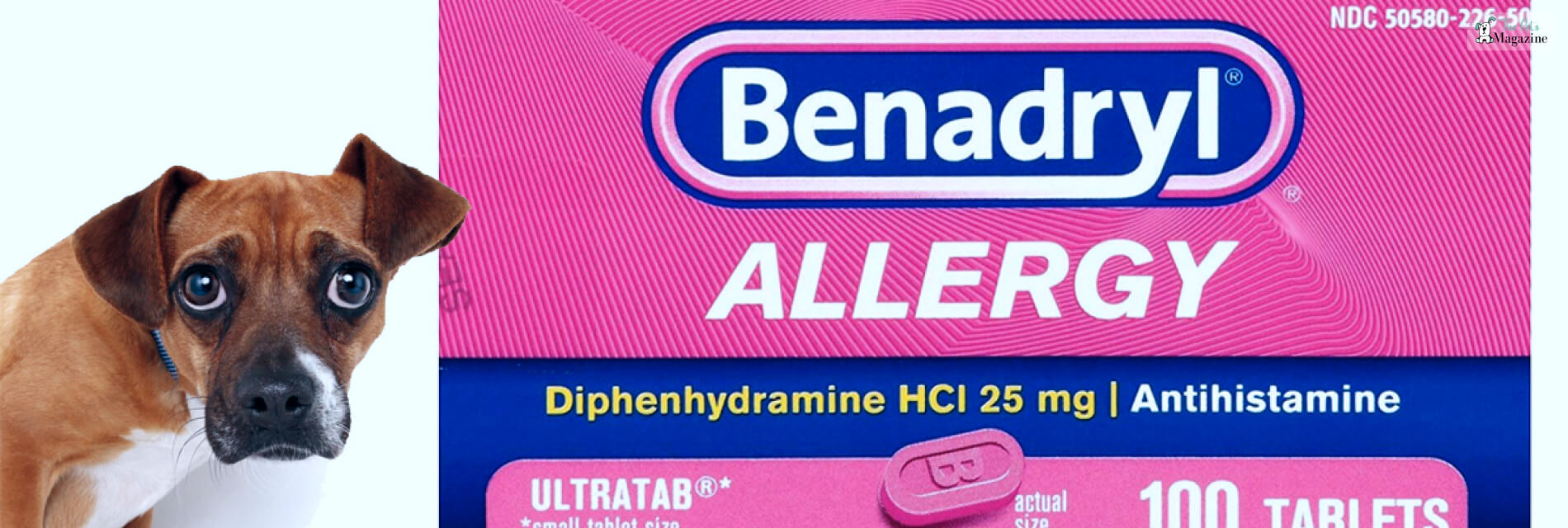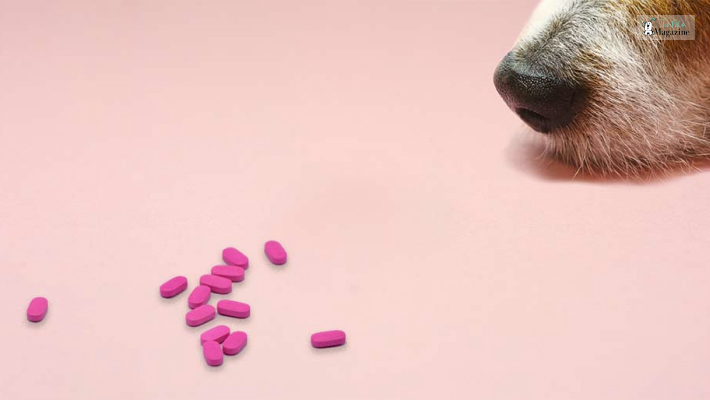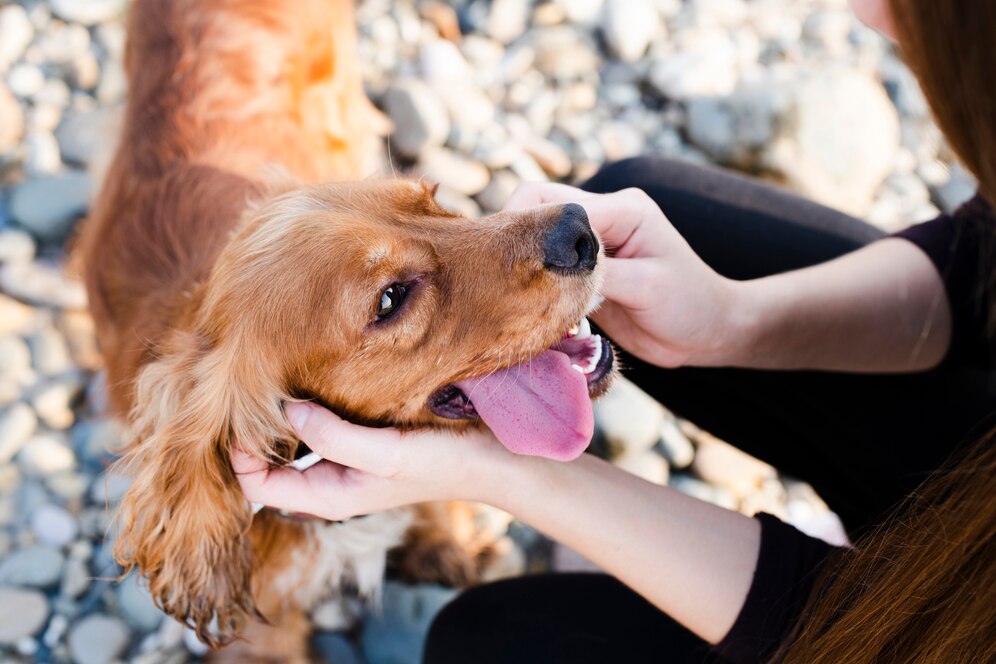Can I Give Benadryl To My Dog, And What Is The Right Benadryl Dosage For Dogs


As a responsible pet owner, it’s only natural to be concerned when your furry friend is unwell or experiencing discomfort. One common issue that dogs often face is allergies. Just like humans, dogs suffer from allergies too, and it can be distressing to watch them deal with symptoms such as itching, sneezing, or hives.
In such cases, many pet owners wonder if they can safely give Benadryl, a popular antihistamine medication, to their dogs. In this article, we will explore the uses of Benadryl, its safety for dogs, the factors to consider before administering it, the right Benadryl dosage for dogs based on your dog’s weight, how to administer it, common side effects, alternative treatments, and the precautions and warnings associated with using Benadryl for dogs.
What Is Benadryl, And What Is It Commonly Used For?

Before we move on to discuss the right Benadryl dosage for dogs, let’s first see what Benadryl is. Benadryl or is an antihistamine medication. However, Benadryl is the brand name, whereas the generic name of the medication is diphenhydramine. This medication is commonly used to treat allergy symptoms in humans. The way this medication works is by stopping the effects of histamine, a natural substance produced in the body in response to an allergic reaction.
The medication also prevents the production of another natural substance called acetylcholine. This substance released by the body during allergy is responsible for symptoms such as watery eyes and runny nose.
This is why Benadryl is so effective in reducing symptoms such as itching, sneezing, watery eyes, and runny nose. Additionally, Benadryl can also be used to relieve symptoms of motion sickness and to aid with sleep disturbances. However, it’s important to note that Benadryl is not a cure for allergies but rather provides temporary relief from symptoms.
Understanding Allergies In Dogs

Before we discuss whether dogs can take Benadryl, it’s essential to understand allergies in dogs. Dogs can be allergic to various substances, including pollen, mold, dust mites, certain foods, and even flea bites.
Allergic reactions in dogs can manifest in different ways, including itching, redness, swelling, sneezing, coughing, vomiting, diarrhea, and hives. It’s crucial to pay attention to these symptoms and consult your veterinarian for a proper diagnosis before considering any treatment options, including Benadryl.
Can Dogs Take Benadryl? Is It Safe?
Now, let’s address the burning question: can dogs take Benadryl, and is it safe for them? The answer is yes, dogs can take Benadryl, but it should only be done under the guidance and supervision of a veterinarian.
While Benadryl is generally considered safe for dogs, there are several factors to consider before administering it. Every dog is unique, and what works for one may not work for another.
Factors To Consider Before Giving Benadryl To Your Dog:
Before giving Benadryl to your dog, it’s important to consider a few factors, as these factors can affect the safety and effectiveness of Benadryl.
- Firstly, you should ensure that your dog is not allergic to Benadryl itself or any of its components.
- Secondly, you should consult with your veterinarian to rule out any underlying medical conditions or medications that may interact with Benadryl.
- Additionally, it’s important to consider your dog’s age, overall health, and any pre-existing conditions they may have.
It’s crucial to consult with your veterinarian to determine if Benadryl is the right treatment option for your dog’s specific condition and to get the correct dosage based on their weight.
Benadryl Dosage For Dogs Based On Weight

The correct dosage of Benadryl for dogs depends on their weight. It’s crucial to follow your veterinarian’s guidance on the appropriate dosage for your specific dog. However, according to Merck Veterinary guidelines, the recommended dosage of Benadryl is 0.9-1.8 mg of Benadryl per pound of body weight or 2-4 mg per kilogram of body weight. In a day, Benadryl dosage for dogs can be given 2-3 times.
Therefore if your dog weighs 10 pounds, the correct Benadryl dosage would be 10 mg given in the morning, afternoon, and night. Similarly, the correct Benadryl dosage for dogs weighing 30 pounds will be 30 mg.
However, it’s important to note that this is just a guideline, and your veterinarian may recommend a different dosage based on your dog’s individual needs. It’s crucial to never exceed the recommended dosage without consulting your veterinarian.
How To Administer Benadryl To Your Dog?

Benadryl is available in the market in different forms, such as oral tablets or capsules, chewable tablets for children, and liquid. You can choose any form of Benadryl that you think will be easier for your dog to swallow.
In general, chewable tablets for children and liquids are suitable for small dogs and dogs who resist swallowing pills. You can also ask your vet to recommend which form of Benadryl will be more suitable for your dog.
Whatever form of Benadryl you use, you should ensure that you are using the appropriate strength of Benadryl for your dog’s weight and that you are giving the correct dosage. You can give Benadryl to your dog by mixing it with their favorite treat or by placing it in their mouth.
You can follow the steps below to make your dog swallow the pill –
- Make sure that your dog is in a comfortable area where you can handle him easily.
- Soften the pill with gravy or broth so it’s easier for your dog to swallow.
- Hold the pill in your dominant hand, and with your other hand, hold your dog’s muzzle.
- Gently guide your dog’s head upwards, and their lower jaw will open up automatically.
- Use your hand to get your dog’s mouth to open up further. Place the pill as far back as possible on your dog’s tongue.
- Avoid putting your hand very far back into your dog’s mouth as it may trigger gag reflex and cause your dog to throw up.
- Close your dog’s mouth and slowly place their head in a normal position.
- Rub their throat gently in a downward motion to encourage swallowing. You can also rub their nose to encourage them to swallow their pill. You will notice that your dog licking its nose after swallowing the pill.
While giving Benadryl dosage to dogs, avoid using time-release capsules or any formulation that contains alcohol.
Common Side Effects Of Benadryl In Dogs

While Benadryl is generally safe for dogs, it can cause certain side effects. The most common side effects are as follows –
- Drowsiness
- dry mouth
- urinary retention
- Fast breathing
- Sudden increase in heart rate
- Increased salivation
Some dogs may also experience gastrointestinal upset, such as loss of appetite, vomiting, or diarrhea. These side effects are usually mild and temporary. However, if your dog experiences severe side effects for two or more days, you should take them to the vet.
In addition to knowing the right Benadryl dosage for dogs, there are certain precautions and warnings to keep in mind when using Benadryl.
Firstly, it’s essential to only use the plain Benadryl formulation that contains diphenhydramine and avoid any combination products such as Tylenol that may contain additional active ingredients that could be harmful to dogs.
Secondly, if your dog has any pre-existing medical conditions, such as heart disease or glaucoma, or if they are taking any other medications, it’s important to consult with your veterinarian before giving them Benadryl.
Additionally, it’s crucial to monitor your dog closely for any adverse reactions and to contact your veterinarian if you have any concerns.
Alternative Treatments For Dog Allergies
Benadryl can be a safe and effective treatment option for dogs with allergies when used under the guidance of a veterinarian. It’s important to consider factors such as your dog’s individual needs, weight, and overall health before administering Benadryl dosage for dogs.
Always consult your veterinarian for the appropriate dosage and to rule out any underlying conditions. While Benadryl can provide relief for dog allergies, it’s important to remember that it is not a cure and that alternative treatments may be necessary depending on your dog’s specific situation. By working closely with your veterinarian, you can ensure the well-being and comfort of your furry friend.
Depending on the severity and nature of your dog’s allergies, your veterinarian may recommend alternative treatments. These can include prescription medications, hypoallergenic diets, desensitization therapy, or even natural remedies such as fish oil or herbal supplements. It’s important to work closely with your veterinarian to find the most suitable treatment plan for your dog’s specific needs.








Leave A Comment